Contents
Even at the stage of growing seedlings, the farmer puts a lot of love and care into the plants, rejoicing at the appearance of each new leaf and very sad when various insects and diseases infect green seedlings. Peppers, like many other crops, are not protected from all kinds of ailments and at any time can suffer from the negative effects of pests. That is why, when growing peppers, it is necessary to know the symptoms of diseases and how to deal with them. This will allow timely detection of the problem and prevent its development, keeping the plant healthy.
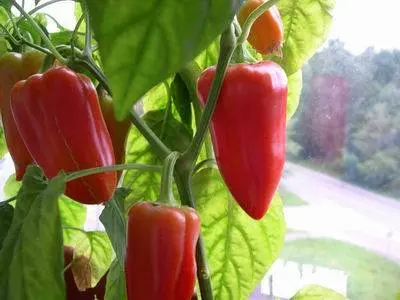
seed treatment before sowing
Quality seeds are the key to a good harvest. This statement must be remembered even before sowing pepper seeds for seedlings. After all, it is on the surface of the grains that all kinds of fungi and pest larvae can be found. If they are not removed in a timely manner, then after sowing such seeds, the plants will be infected, and when a favorable humid environment with elevated temperature is created, the harmful microflora is activated, harming still young, unformed plants.
For sowing seedlings, only filled, viable seeds should be used. It is quite difficult to check their germination “by eye”, so it is better to use the method using a saline solution. To do this, pour 1 liter of water into the container and add 2-3 tablespoons of table salt. In the resulting solution, you need to lower the seeds and mix the mixture. After 5-10 minutes, seeds suitable for sowing will sink to the bottom of the container, poor-quality seed will float to the surface of the liquid. Empty seeds should be disposed of, and full-weight seeds should be washed under running water and dried.
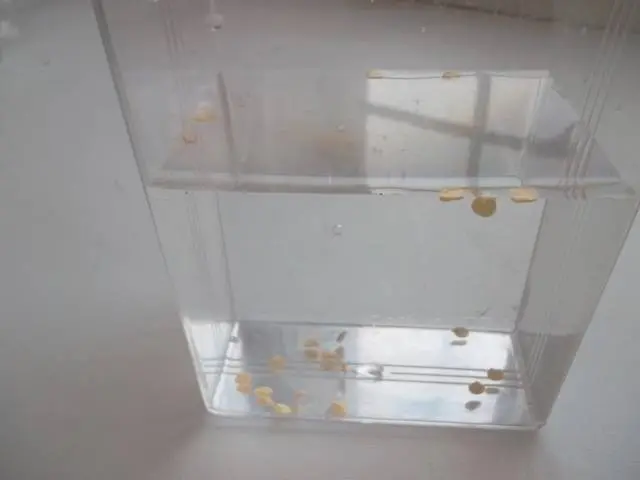
It is possible to destroy possible fungi and pest larvae from the surface of the pepper seed by dressing. The procedure is carried out by soaking the grains in a weak 1% solution of potassium permanganate. The processing time should be no more than 15 minutes. After dressing, pepper seeds must be washed and used for further nutrient treatment and germination. An example of pickling pepper seeds with potassium permanganate is shown in the video:
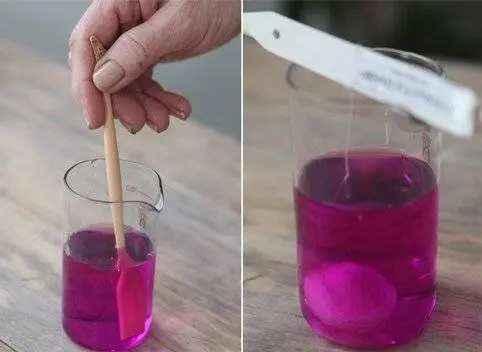
Seeds that have passed “salt selection” and dressing with potassium permanganate will have a high percentage of germination and good protection against ailments, resistance to adverse conditions.
Soil disinfection
When sowing pepper seeds for seedlings, it is necessary to take care of the “purity” of not only the seeds, but also the soil. Often, it is the soil that can contain pathogens of various diseases. Particular attention should be paid to the substrate, prepared independently using soil from the garden.
You can disinfect the soil by heating or spilling:
- You can warm up the ground for sowing peppers for seedlings in the oven at a temperature of 170-2000C for 20-30 minutes. Also, heating can be carried out on an open fire, scattering soil on a metal plate. Thermal exposure allows you to destroy all the harmful microflora and preserve the health of plants.
- To spill the soil, use a weak manganese solution or boiling water.
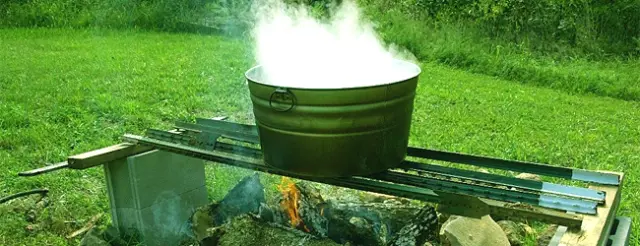
Disinfected soil does not contain harmful fungi and pest larvae. By sowing properly treated seeds in such soil, it is possible to reliably protect seedlings of peppers from all kinds of ailments. You can see an example of soil disinfection for growing seedlings in the video:
Treatment of pepper from fungus and viruses
Most diseases of vegetable crops develop in an environment with a certain humidity and air temperature. Fungi or viruses can provoke ailments. More often, peppers planted in a greenhouse or greenhouse suffer from them. Unfavorable, rainy conditions in the open ground can also contribute to the development of harmful microflora. In order to protect plants and get a good harvest of vegetables, it is necessary to know the signs of infection and methods for preventing diseases.
Potassium permanganate for disease prevention
There are a number of fungal diseases of pepper, in the fight against which treatment with potassium permanganate shows high efficiency. Manganese solution can be used to combat and prevent diseases such as:
Verticillosis
This fungal disease can manifest itself in various forms, so it is not always possible to recognize it in a timely manner. Symptoms of verticillium in peppers can be:
- Slow plant growth, in which some leaves turn yellow and fall off. The ovaries fall off during the formation process, and the vegetables at the ripening stage lag behind in development. This form of verticillosis is called dwarfism;
- The forms of brown and green wilt are similar to each other. In this case, the infected plant looks relatively healthy, well-formed, but its leaves gradually change color and fall off. With this form of verticillium, the plant can die in a few days.
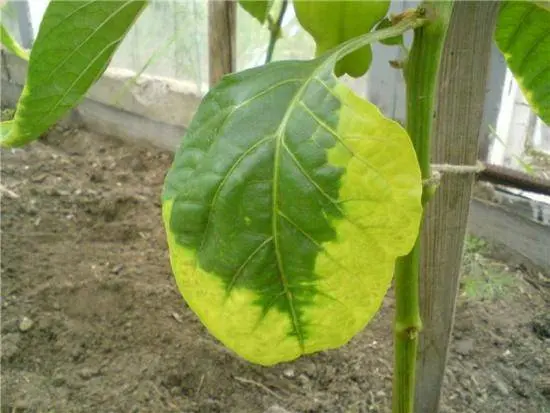
Infection with this fungal disease can occur during transplanting or loosening peppers, when the roots of the plant are injured. It is impossible to cure verticillium, however, for its prevention it is recommended to grow varieties resistant to this disease. You can also prevent the development of the disease by disinfecting the soil with potassium permanganate or boiling water before planting seedlings.
Phytoplasmosis
This disease caused by harmful microorganisms can also be found under the name pepper stolbur. Infection of plants occurs through contact with insect vectors, such as aphids, cicadas, mites.

In the early stages of infection, phytoplasmosis symptoms appear on the tops of peppers. The edges of young leaves begin to dry out and wrap up. As the disease progresses, all leaves on the bush become yellow and curled. Peppers on such bushes have an irregular, twisted shape, begin to turn red before the onset of biological ripening. Seedlings of peppers, like adult plants, can get sick with phytoplasmosis. In this case, young plants develop slowly and stop their growth in a dwarf form.
It is quite difficult to prevent infection of peppers with phytoplasmosis. To do this, first of all, it is necessary to protect plants from insect carriers of the disease. Diseased plants must be destroyed by burning. Garden tools after working with peppers suffering from phytoplasmosis should be thoroughly washed with a solution of potassium permanganate.
Fitoftoroz
Many gardeners are familiar with this fungal disease. It can affect various types of vegetable crops, including varieties of Bulgarian and hot peppers. With late blight, brown spots appear on the leaves of the plant, which increase over time, affecting the entire leaf plate. Wet brown spots, similar to rot, can also be observed on the fruits of the crop.
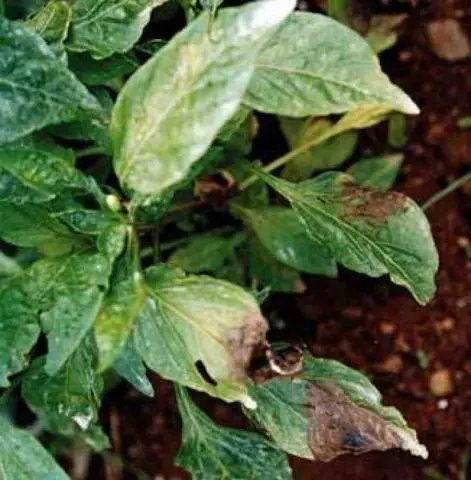
Infection with this disease occurs by late blight spores, which can be airborne or in the ground. Getting on the leaves of peppers, the spores are in a “sleeping” state, but with an increase in humidity they are activated. Only 4-5 hours are enough for the development of the disease.
Late blight can be a real problem for a gardener, since spores at the stage of active development can damage plants and fruits. You can fight the disease with the help of chemicals “Ordan”, “Oxyhom”, “Ridomil Gold”. The biological product “Fitosporin-M” is a tool that shows high efficiency in the fight against late blight in the early stages of infection.
To prevent the disease, it is necessary to shed the soil with copper sulfate or potassium permanganate even before planting seedlings of peppers. With the onset of active flowering, peppers should be sprayed with products containing copper. These simple preventive measures will reliably protect plants from the disease.
Blackleg
This disease is typical for seedlings of peppers and adult plants in greenhouses. Black leg infection occurs with seeds. That is why planting material must be disinfected before sowing.
The disease develops in conditions with high humidity and poor air circulation. Symptoms of the disease are the appearance of dark spots on the stem of the pepper and gradual wilting. If the problem is not detected and eliminated in time, then the death of peppers is inevitable.
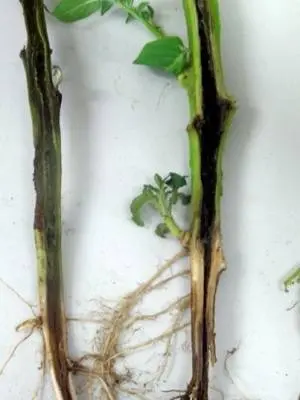
Preventive measures to prevent the disease must be taken care of at the stage of sowing seeds, processing and sowing grains in compliance with the recommended distances. Already grown seedlings are treated with potassium permanganate for the same purpose. Compliance with the humidity regime will also protect peppers from blackleg at all stages of cultivation.
Processing peppers with chemicals
In addition to the above diseases, peppers can suffer from:
- Spotted wilt (bronze). This disease stains young leaves of peppers in a bronze or gray-purple color. Over time, brown spots appear at the base of the leaves, spreading over the entire leaf surface. Spots in the form of rings of various colors can be seen on the fruits of infected plants. You can treat peppers from bronze with “Fundazol”.
- Cladosporiosis, which is manifested by the appearance of brown spots on the outer side of the sheet and a gray coating on its inner side. With the development of the disease, the leaves of peppers fall off, the plant itself dies. Preventive measures in the fight against the disease are the observance of the humidity and temperature conditions in the greenhouse, the treatment of soil and equipment with copper sulphate. To treat plants from this disease, you can use the preparations “Barrier”, “Barrier”.
- Mosaics. A symptom of this viral disease is the variegated color of pepper leaves, combining shades of light and dark green tones. The disease is not able to destroy the plant, however, it significantly reduces the yield of the crop. To combat mosaic pathogens, you can use the drug “Commander”.
- Gray rot, which develops at high humidity and temperatures up to +200C. Fungal disease affects stems, leaves and fruits. Peppers infected with gray mold become moldy and unfit for consumption. You can treat the disease with “Barrier”.

When growing sweet Bulgarian varieties and hot peppers, it is necessary to remember, first of all, about disease prevention measures. So, all fungal diseases can be prevented by treating pepper seeds, soil, walls and structural elements of the greenhouse, garden tools with potassium permanganate. Spraying peppers with boric acid allows you to feed the plants and make them more resistant to various diseases. Processing seeds, seedlings and adult peppers with Athlete will also allow plants to gain enough strength to resist all kinds of diseases.
Processing peppers for pest control
Insect pests cannot destroy pepper crops, however, their activity negatively affects crop yields. In relation to pepper, aphids, slugs and spider mites often show their activity.
aphid
This insect, familiar to many, parasitizes on the stems, leaves and flowers of peppers, sucking juices and nutrients from the plant cells. As a result of such exposure, the leaves curl and dry out, the ovaries and flowers fall off, and the fruits acquire an ugly shape.

To combat the pest, you can use special preparations, for example, Karbofos, Keltan. Some gardeners in the fight against insects use an infusion of their own preparation. To do this, add a glass of wood ash and a tablespoon of liquid soap to a bucket of water. The prepared solution is used for spraying plants.
Slugs
Slugs are not averse to eating fruits and pepper leaves. At the places of their “meal”, as a rule, rotting is formed, which can lead to leaf fall and crop loss. In the fight against this pest, you can use the Arrow chemical preparation, but there is also a folk way to deal with the slug. It consists in protecting the plant by making a ditch around the perimeter of the ridge. Ground hot pepper or mustard powder is poured into it. When watering, it is necessary to ensure that the water does not wash out these substances, and after rain, the earth in the grooves must be loosened and sprinkled again with mustard or hot pepper.

spider mite
The presence of this pest can be signaled by a characteristic cobweb on the inside of the pepper leaf. As a result of such exposure, the leaves curl, flowers and ovaries fall off. Spider mites negatively affect crop yields. You can fight the tick with the help of Karbofos, Phosbecid or Fufanon.
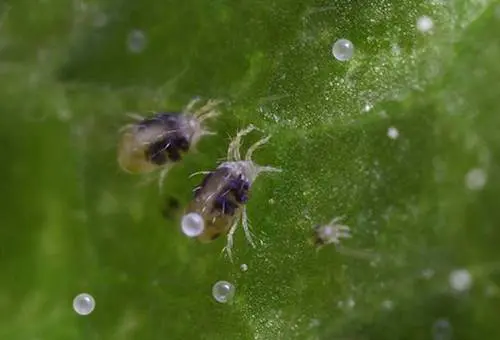
It is worth noting that boric acid can be an excellent measure to protect peppers from pests. It consists of poisons, consuming which insect pests die after 8-10 hours.
Conclusion
Preserving your harvest is easy enough if you know who and how to deal with. So, every gardener should know the symptoms of plant infection and methods of their protection, as well as ways to deal with various harmful insects. Preventive measures based on the use of heat treatment and treatment with manganese, boric acid, allow you to prevent a lot of problems in advance, protecting plants from the moment of seed germination until the end of fruiting.









